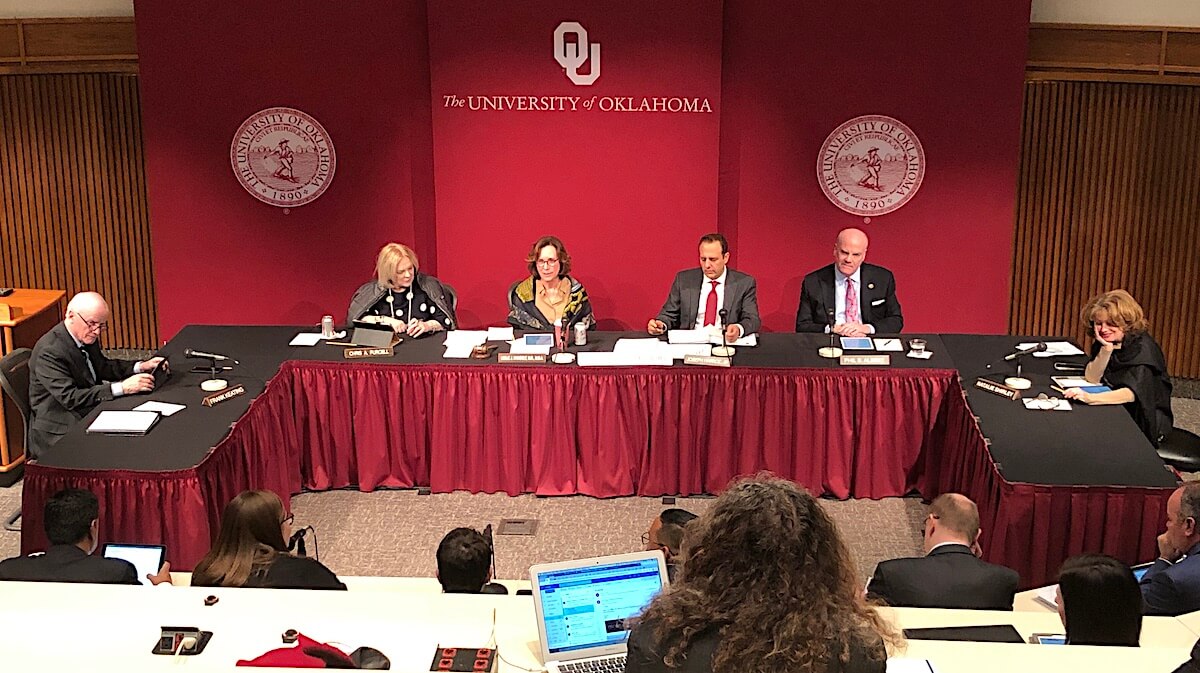
The University of Oklahoma Board of Regents held a series of committee discussions ahead of its full meeting today, which emphasized a continued commitment to reducing costs, limiting tuition and fee increases and a proposed change in ownership of OU’s power production facilities.
The board also approved the creation of a 120-credit-hour bachelor’s degree program in computer science at the OU Tulsa campus. Lawmakers, OU administrators and community leaders have been working to form pathways to undergraduate degrees in Tulsa, a community touched by five different public higher education institutions.
Thursday’s meeting agenda described its impetus and goals:
Computing is part and parcel of every human activity. The demand for Computer Science graduates is soaring. There is large demand for [computer science] graduates in the State of Oklahoma. CareerOneStop projects 16 percent job growth for computer science careers in Oklahoma through 2026. The goals of this program: 1) Increase the number of graduates in Computer Science to address the workforce demands. 2) Provide opportunities for students in the large Tulsa Metropolitan community to pursue a rigorous, math-intensive Computer Science education offered by the University of Oklahoma. 3) Create a larger pipeline of students to the graduate programs in computer science, data science and analytics, and electrical and computer engineering at the University of Oklahoma.
“We are very excited,” said OU Provost Kyle Harper. “We think this is going to be a dynamic program.”
OU-Tulsa President John Schumann said he and other administrators have been working to create the new program for about two years.
“We’re thrilled that the regents have approved this item. The department of computer science in the college of engineering has sought to expand the workforce as is needed in Tulsa and northeast Oklahoma.”
Those pursuing the degree program could complete their first two years at Tulsa Community College or similar institutions.
“As part of the strategic framework for all three of the campuses, we in Tulsa have also been tasked with looking into the ways we can best-impact higher education in Tulsa,” Schumann said after Thursday’s meeting. “It’s a complicated arena there, so what we want to do is move toward reducing the gap in bachelor’s degree attainment that has been articulated by our chamber of commerce.”
Regents Chairwoman Leslie Rainbolt-Forbes concurred.
“It’s important to recognize the various needs of the areas of the state,” she said.
Utility change: OU Norman to save $6 million annually

One of the needs facing OU overall has been financial planning and prudence, according to regents and administrators. During the morning’s first committee meeting — on budgets and audits — the room of about 20 people learned about efforts to reduce Norman-campus expenses.
“We reduced our expenditures by $50 million,” OU Chief Financial Officer Ken Rowe said of the past year. “We set a target this year of trying to cut another $25 million out of our budget on the Norman campus.”
Former Gov. Frank Keating, an OU regent since 2017, reminded the room about how the university’s finances looked in the fall of 2018 when now-former President Jim Gallogly took over.
“(He) discovered what we didn’t know — basically a deficit of $25 million,” Keating said.
Rowe said OU has already identified about $14 million of savings this year, including a proposal passed by regents Thursday to opt out of an electricity management agreement with the company Corix. About a decade ago, OU received an up-front payment of about $70 million in exchange for ultimately leasing back the two Norman campus generation facilities.
Rowe said the contract allows OU to opt out, though it will have to pay a fee. Regents passed a proposal for $85 million in bonds to be used for the initial and longterm transition of electricity operations.
RELATED
With Stitt appointees absent, OU regents hold 8-hour executive session by Tres Savage
“The end result will be that we will once-again manage our utility system, and we will finance the payback of that upfront payment,” Rowe said.
Approval of those bonds will be required by the House, Senate and Gov. Kevin Stitt.
Rowe said OU purchases electricity from OG&E on its Oklahoma City campus and from Public Service Company of Oklahoma for its Tulsa campus. He said the Norman utility change should save OU about $6 million annually.
“The interest rate will be less on these general obligation bonds we are going to issue, and there are also operational costs that we won’t have to pay moving forward,” Rowe said.
Interim OU President Joe Harroz said the move is part of a bigger university effort to reduce costs and avoid tuition increases that might otherwise be necessary.
“This is how we were able to keep tuition flat the last two years, have pay plans and move the mission forward,” Harroz said.
Earlier in the day, Keating had praised the work being done to limit expenses.
“Any way we can free up money to educate people well, compensate the faculty well, is something we want to do,” Keating said.






















